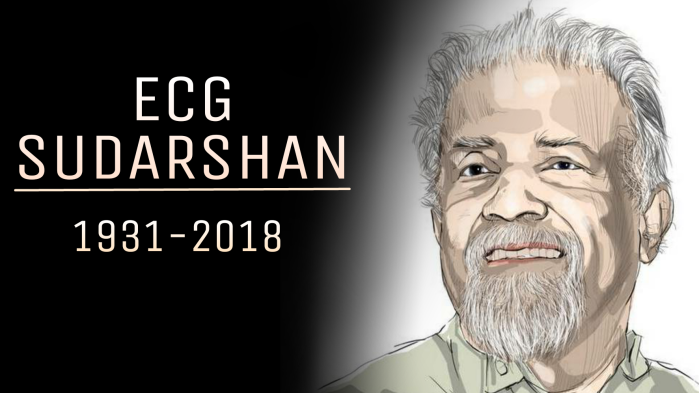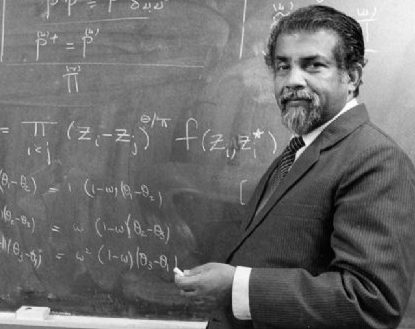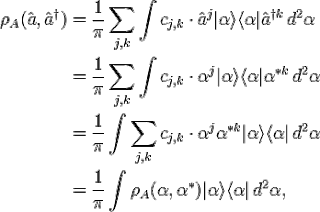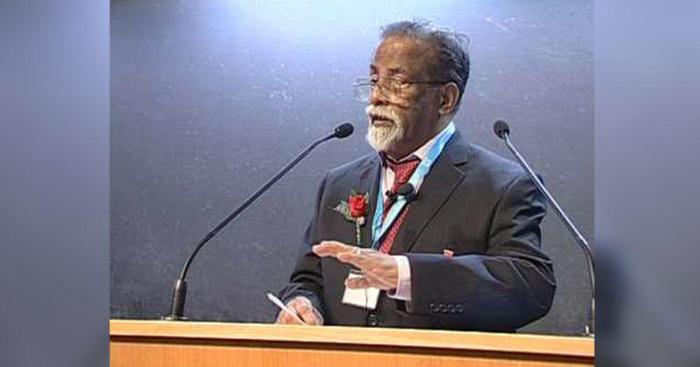
Born in Pallam, Kerala in 1931, Sudarshan obtained his Masters from Madras Christian College, and worked at the Tata Institute of Fundamental Research in Mumbai, before moving to the University of Rochester in New York for his PhD. It was while working for his PhD dissertation that Sudarshan produced the first of his many important contributions to physics.

At least two of his scientific contributions deserved a Nobel Prize. In fact, one of them did get a Nobel, but he was not the recipient. Theoretical physicist E C George Sudarshan, who did pioneering work in a variety of areas like elementary particle physics, quantum field theory, and quantum optics, between 1950s and 1970s, died on May 14 in Texas, the United States, where he was a professor since 1969. He was 86.
“Sudarshan was the most brilliant theoretical physicist of Indian origin in the contemporary period,” fellow physicist T Padmanabhan, a professor at the Pune-based Inter-University Centre for Astronomy and Astrophysics, said.
“His research spanned a wide range of topics and in each of them, he could make deep and brilliant contributions of fundamental nature,” he added.

It had been shown a couple of years earlier that the weak nuclear force, the one that is experienced by sub-atomic particles at tiny sub-atomic distances and is responsible for the radioactive decay of certain material, violated what is called parity symmetry, which the other three fundamental forces of nature — strong nuclear force, electromagnetic force, and gravitation — follow.
“Suppose, a physical event is seen to occur in nature. It was believed that the mirror image of the event was also a possible event. But it was shown that under the influence of weak force, this is not so,” explained scientist N Mukunda, who did his PhD under Sudarshan. Sudarshan extended this finding in his PhD thesis and showed that the weak force acts only on particles with a particular orientation, called ‘left-handed’.
“In my view, this was his biggest achievement. It came when he was still a PhD student and it had been missed even by stalwarts like (Nobel laureate and celebrated physicist) Richard Feynman. Feynman, who developed his theory further, later acknowledged the fact that it had originated in Sudarshan’s work,” Urijit Yajnik of IIT Bombay, who too was a PhD student under Sudarshan, said.
The work, which went on to win the Nobel Prize in 2005, was done in 1963 in the field of quantum optics. “It is well known that light has quantum nature. But in many situations when light interacts with matter, for example, when an ordinary bulb lights up a room, light particles, or photons, can be treated in the classical manner. Its quantum effects can be ignored. Sudarshan produced key mathematical and physical results to distinguish between situations in which the quantum nature of light becomes important and situations in which it can be ignored,” Mukunda said about the work that led to the development of laser as a powerful tool in the study of physics.
In 2005, the Nobel Prize was given to Roy Glauber for these very contributions. Sudarshan, who had come up with the findings first, was ignored, “for reasons which could only be non-academic”, as Padmanabhan put it. The choice was criticised and some scientists even sent a protest letter to the Nobel committee.

Sudarshan had several other achievements against his name. He was the first one to propose the theoretical possibility of a particle, later named tachyons, that could travel faster than the speed of light. “There are problems in the existence of such particles. But he showed that theoretically the existence of such particles was not inconsistent with physical laws,” Yajnik said.